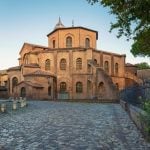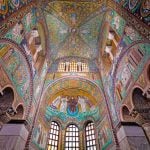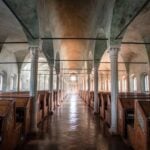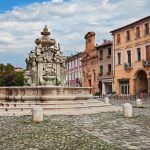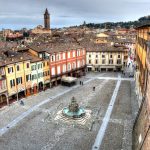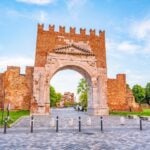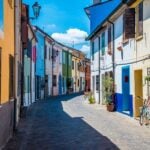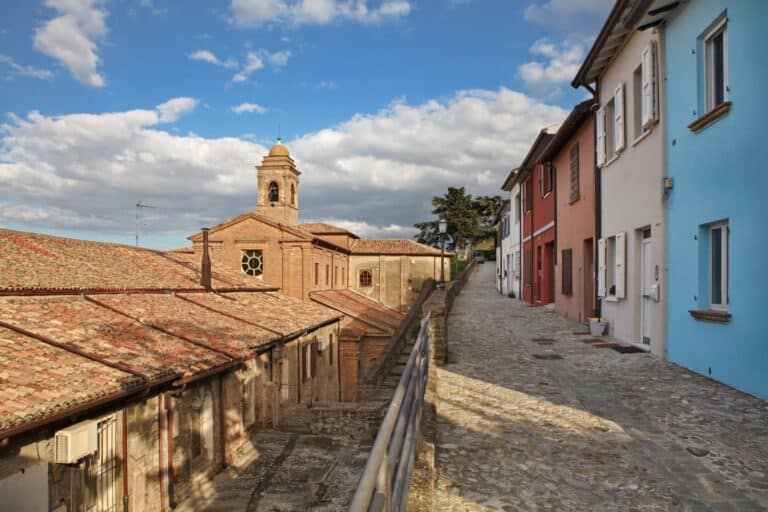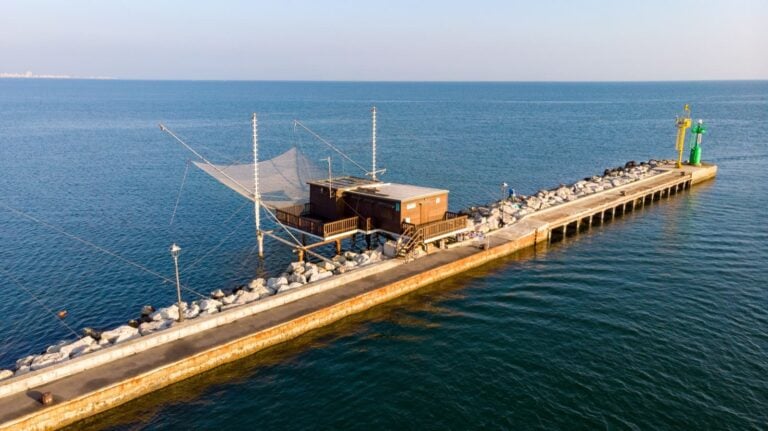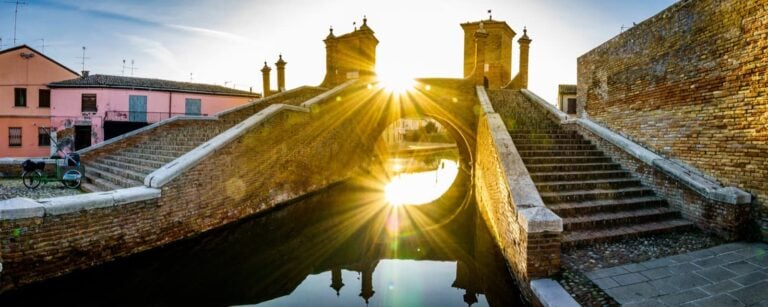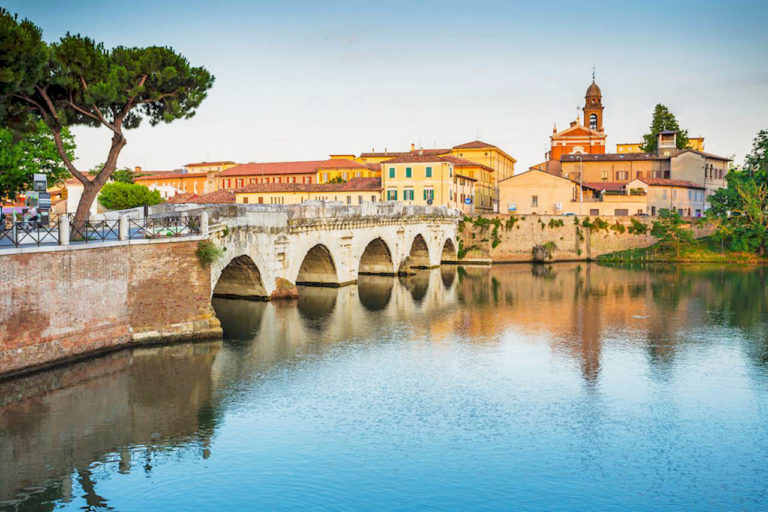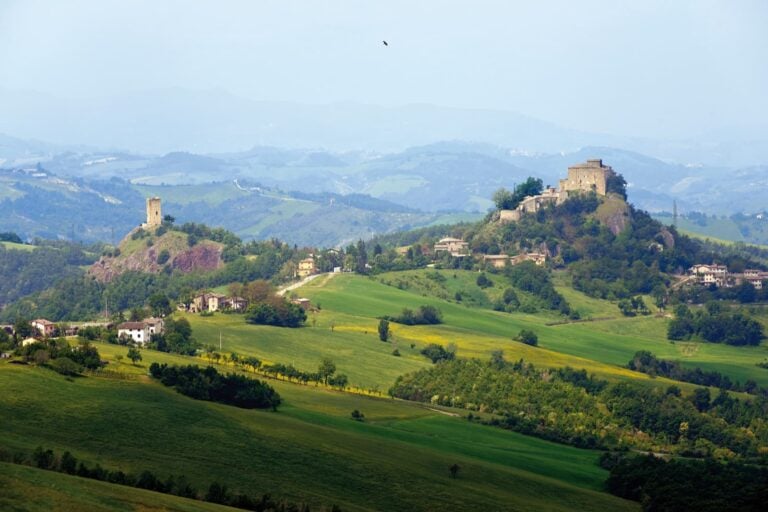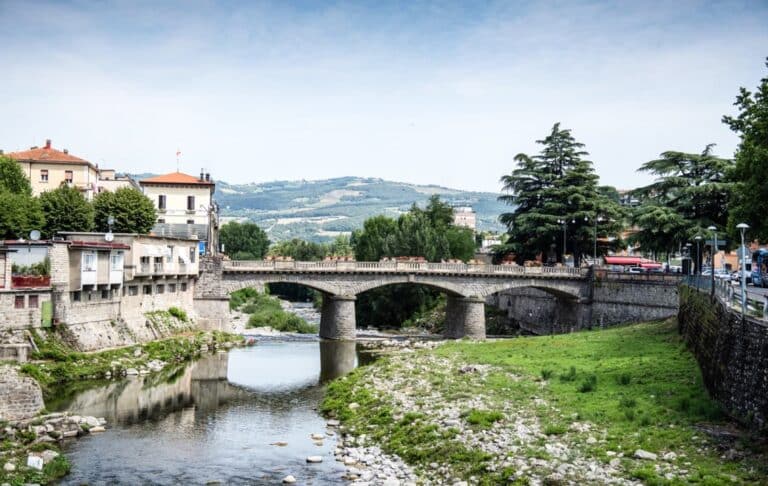
Time
72 h
Discovering the art cities of Romagna by train, with Trenitalia Tper regional services, is a slow, sustainable and fascinating experience.
This itinerary takes you from Ravenna to Rimini, passing through Faenza and Cesena, crossing some of the most beautiful and representative cities of this generous land with a long history.
Each stop is an opportunity to immerse yourself in a unique cultural heritage, taste the local cuisine and experience Romagna in the most authentic way.
First stop: Ravenna, the capital of mosaics
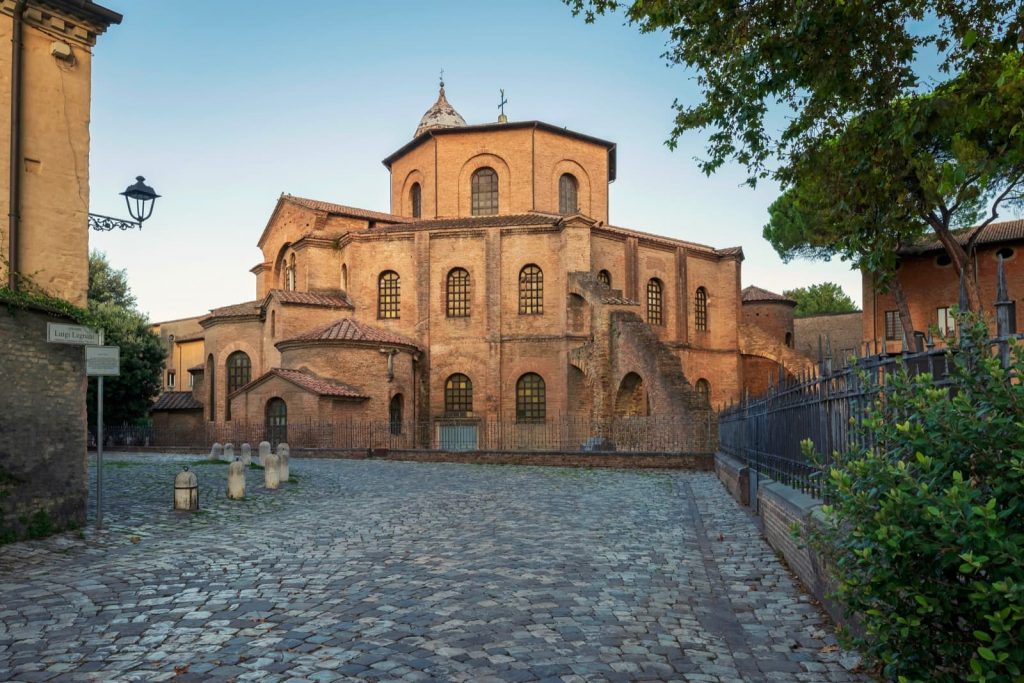
Ravenna, Basilica di San Vitale Ph. Roberto Binetti via shutterstock
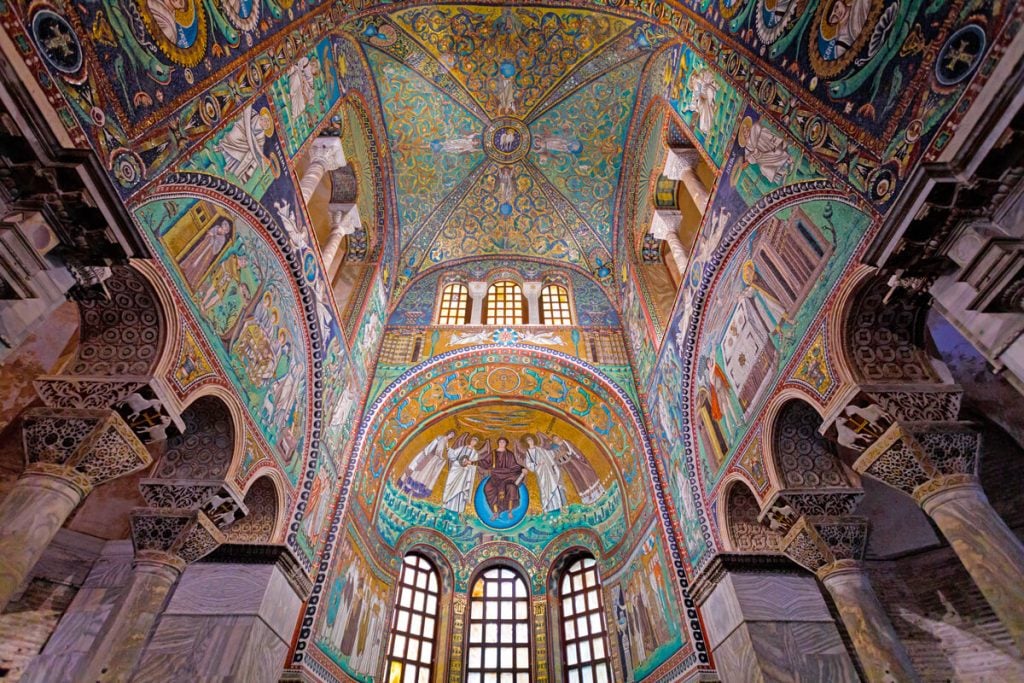
Ravenna (Ra), Basilica di San Vitale | Credit: Visual Intermezzo, via Shutterstock (solo per uso editoriale)
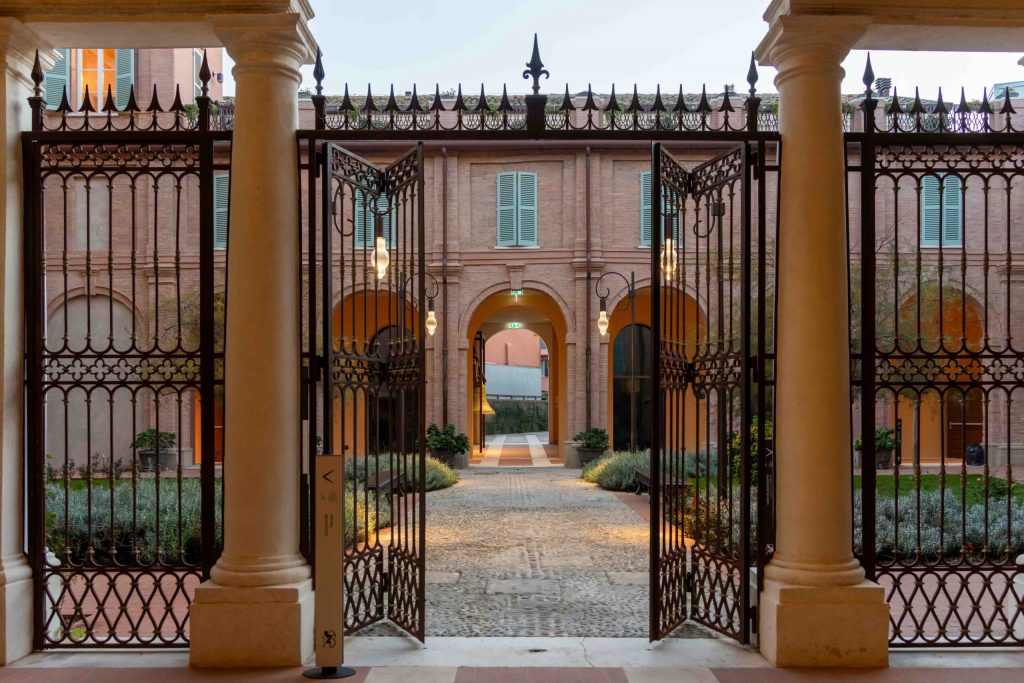
Ravenna, Palazzo Guiccioli | Credit: Emanuele Rambaldi Castrocaro
The journey begins in Ravenna, a city of art with a thousand-year history.
Three times capital – of the Western Roman Empire (402-403), during the reign of Theodoric the Great (493-526), and finally under Byzantine rule (553-751), Ravenna boasts eight monuments declared UNESCO World Heritage Sites, famous for their Byzantine mosaics.
Among these, the Basilica of San Vitale, the Mausoleum of Galla Placidia and the Neonian Baptistery are well worth a visit and will remain etched in your memory forever.
Other notable monuments in the city include the Dante Alighieri’s Tomb, the Basilica of San Francesco and the Byron Museum.
The centre is easy to explore on foot by following our 10-stop itinerary, and there are also plenty of opportunities to sample piadina, which is thick and soft here, and cappelletti in broth.
Second stop: Faenza, between history and ceramics

Faenza Ph. Denis.Vostrikov via shutterstock

Faenza (RA), Palazzo Milzetti Palace, Museo dell'Età Neoclassica in Romagna | Credit: Palazzo Milzetti
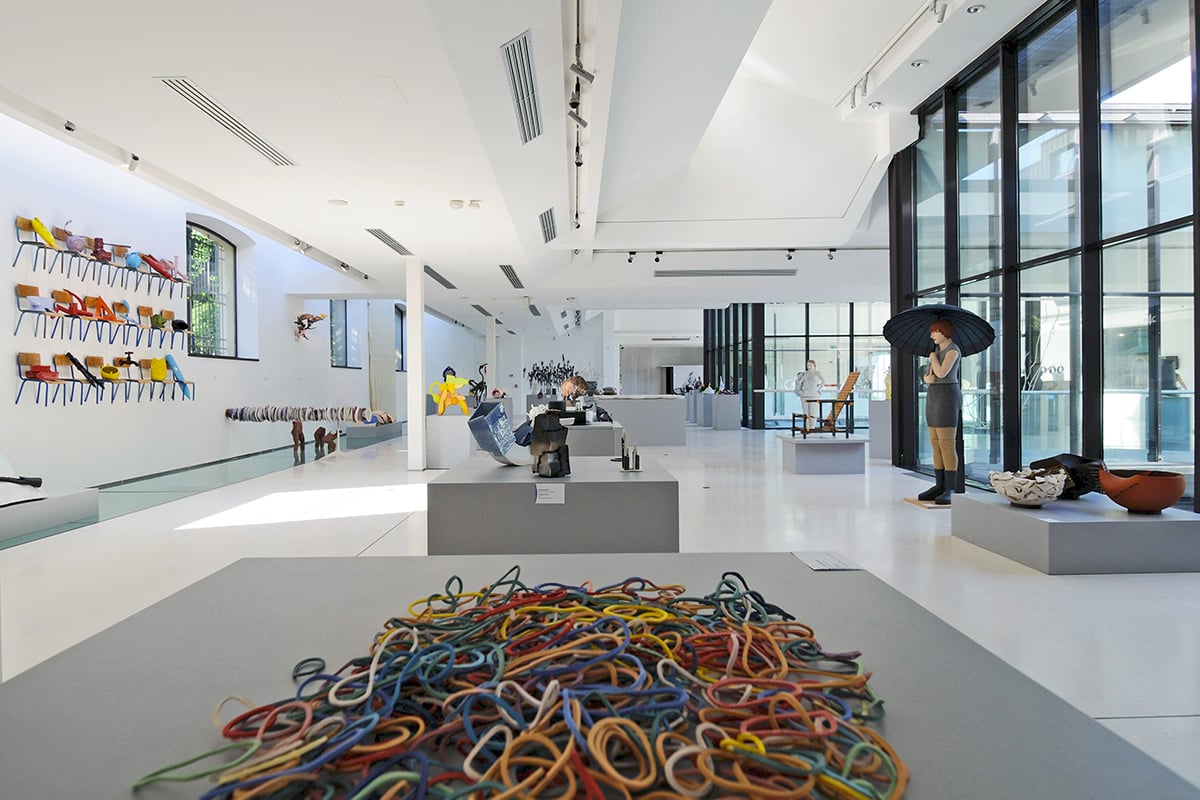
MIC - Museo Internazionale delle Ceramiche (Faenza) | Foto © ilbuonsenso.net
Half an hour away by train, the second stop on our itinerary through the art cities of Romagna is Faenza, famous worldwide for its ceramic tradition.
The MIC – International Museum of Ceramics houses works from all over the world, but the numerous artisan workshops also reveal the identity of this city.
Highlights in Faenza include Palazzo Milzetti, a splendid example of neoclassical architecture housing the Museum of the Neoclassical Age in Romagna, and the Carlo Zauli Museum, dedicated to the Faenza-born artist and ceramic sculptor.
In the spectacular Piazza della Libertà, overlooked by the cathedral, and Piazza del Popolo, lined with elegant Renaissance buildings, we recommend sitting down to enjoy a coffee under the loggia before catching the train to your next destination.
Third stop: Cesena, the city of books

Biblioteca Malatestiana, Sala del Nuti Ph. Archivio Comune di Cesena
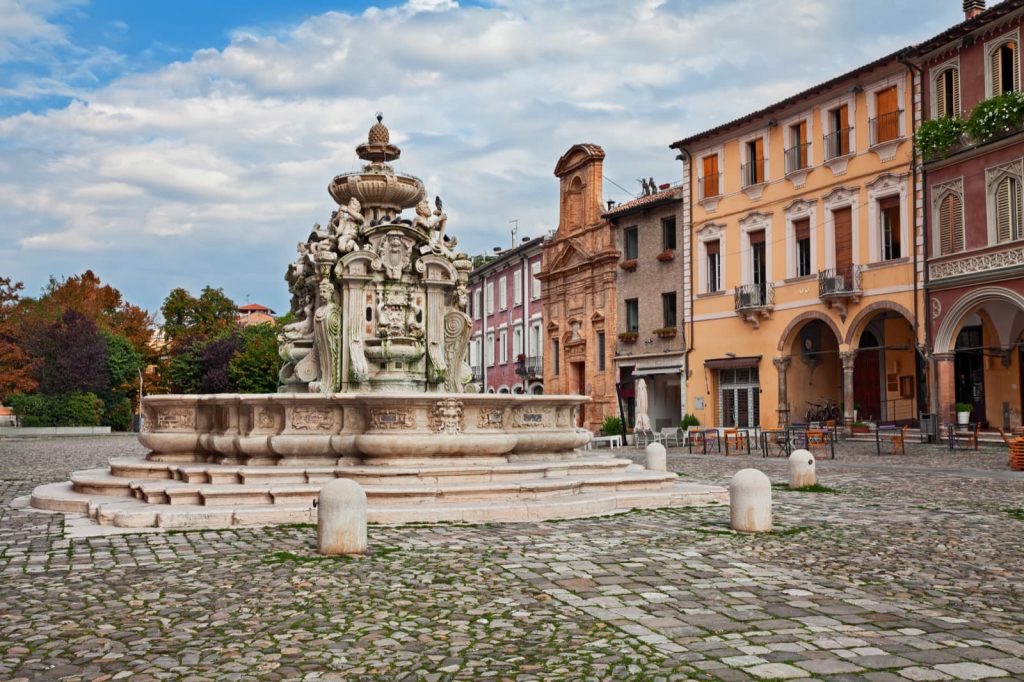
Cesena, Masini Fountain in Piazza del Popolo h. ermess via shutterstock
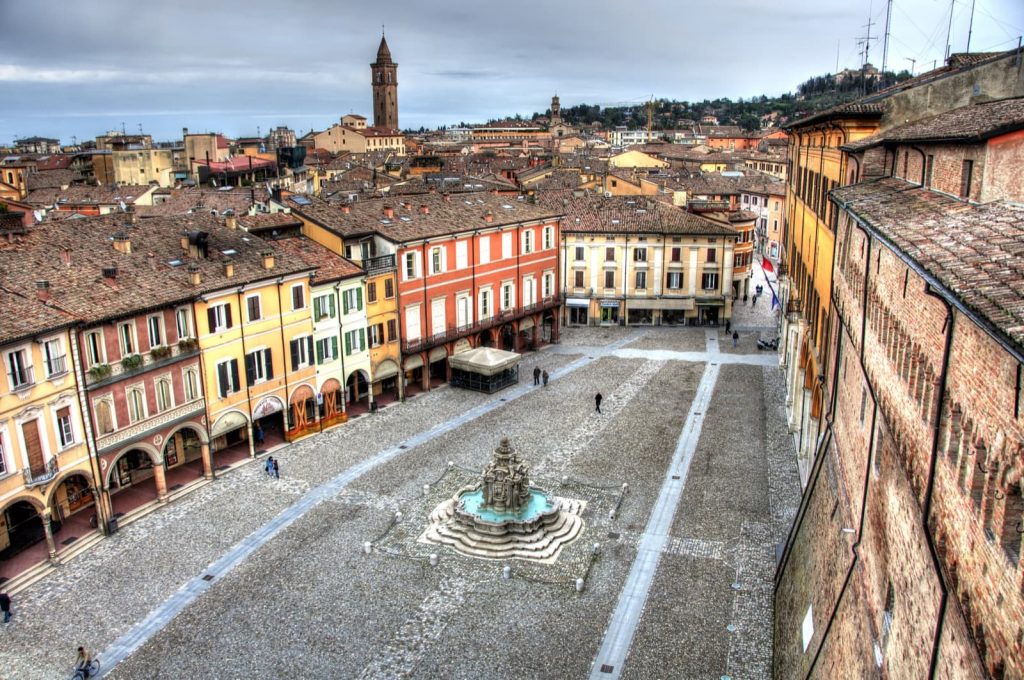
Cesena (FC) Piazza del Popolo Ph. Erich Zangheri CC BY-SA 40
In about 25 minutes by train, you can reach Cesena, an elegant, people-friendly town.
Its most famous monument is the Malatestiana Library, which is about a 15-minute walk from the station. The Malatestiana is the only perfectly preserved example of a humanist library in terms of its building, furnishings and book collection. In fact, it is now included in the UNESCO Memory of the World Register.
A few minutes’ walk takes you to the picturesque Piazza del Popolo, the heart of the city, characterised by colourful houses and the 16th-century Masini fountain.
From here, a 10-minute walk takes you to the Rocca Malatestiana, which dominates the city and offers a splendid view. Alternatively, you can take a break in the city centre amid farmers’ markets, piadina and local wines.
Before returning to the station, follow our 10-steps itinerary to see the best of Cesena on foot.
Fourth stop: Rimini, between ancient Rome and the Riviera
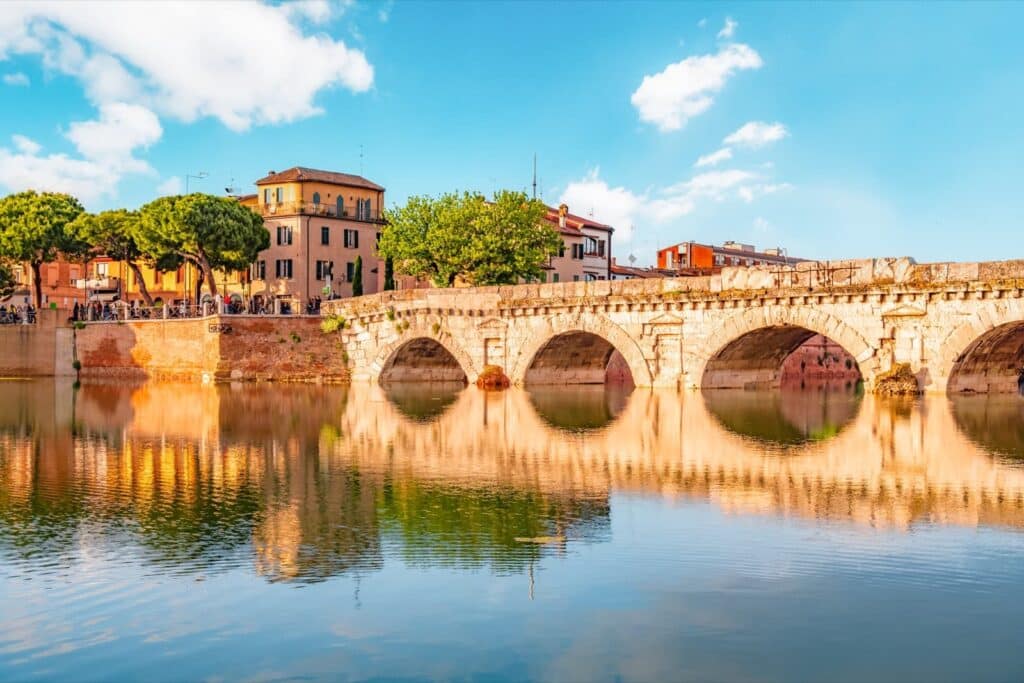
Rimini, Ponte di Tiberio Ph. zedspider via shutterstock
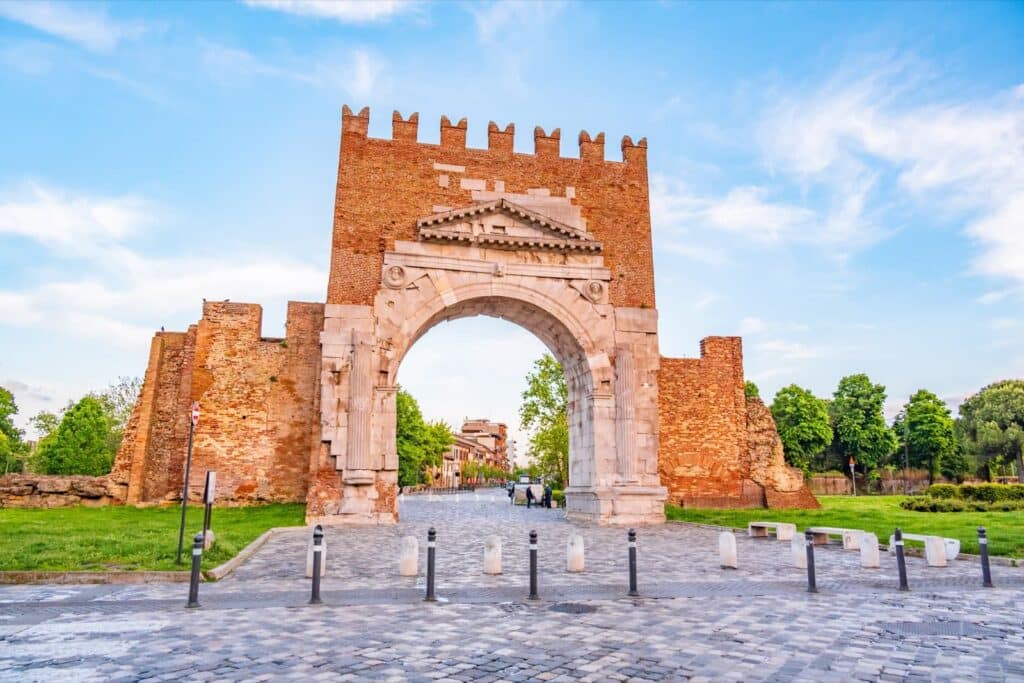
Rimini, Arco d'Augusto Ph. zedspider via shutterstock
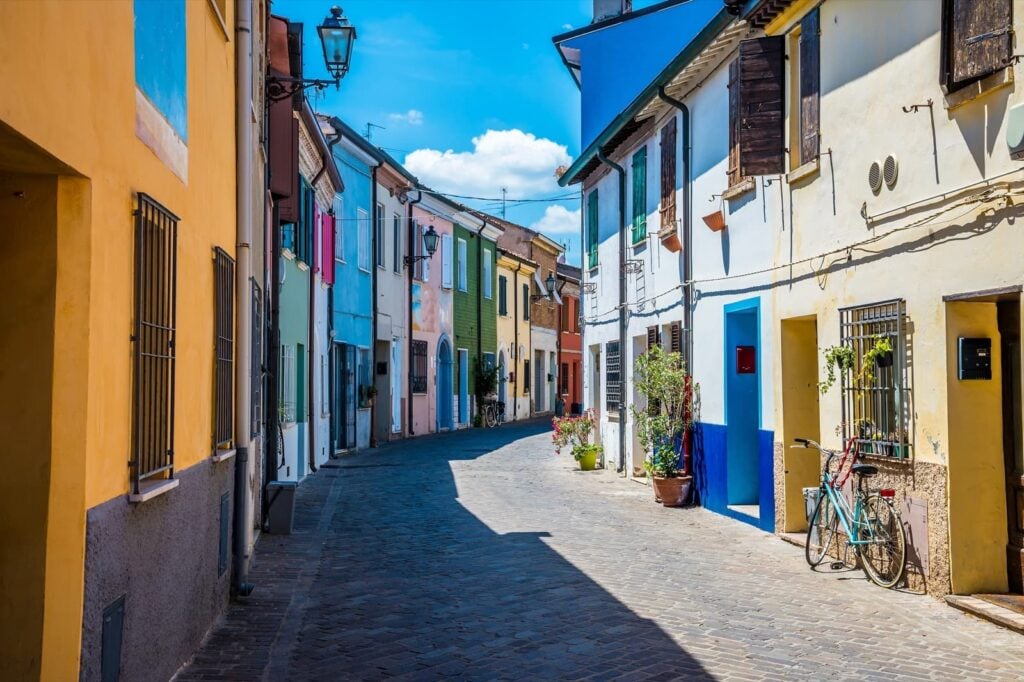
Rimini, Borgo San Giuliano Ph. Nicola Pulham via Shutterstock
In about half an hour by train, you finally arrive in Rimini, famous for its sea but surprising for its history.
From the Tiberius Bridge to the Arch of Augustus, from the Galli Theatre to the Malatesta Temple, the city is like an open-air museum.
For film lovers, we also recommend a visit to the Fellini Museum, dedicated to the visionary world of the great director who was born here.
Also not to be missed is Borgo San Giuliano, the old fishermen’s quarter rich in murals and immersed in an atmosphere of times gone by.
The historic centre of Rimini is lively and welcoming, perfect for a stroll following our itinerary on what to see in Rimini in 10 stops on foot.
A romantic dinner of piadina – which is thinner and crispier here – and blue fish from the Adriatic is the ideal way to end this itinerary exploring the art city of Romagna.
Author
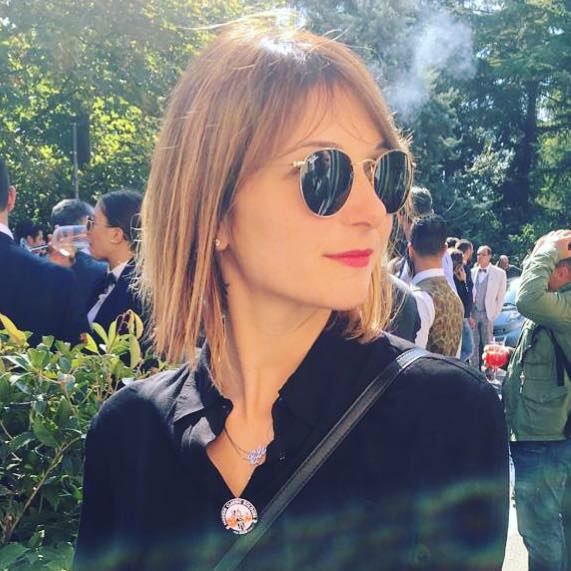
Elisa Mazzini
Social Media Manager for @inEmiliaRomagna and full-time mom.
You may also like
Seaside villages by train: a weekend along the Romagna coast
by Elisa Mazzini /// June 23, 2025

Interested in our newsletter?
Every first of the month, an email (in Italian) with selected contents and upcoming events.
Stress-free holidays. Travelling to Emilia Romagna by train
by Maria Grazia Masotti /// March 28, 2025
By train between villages and castles
by Elisa Mazzini /// December 23, 2024
By train and bike to discover the Matildic Castles
by Elisa Mazzini /// March 19, 2025
